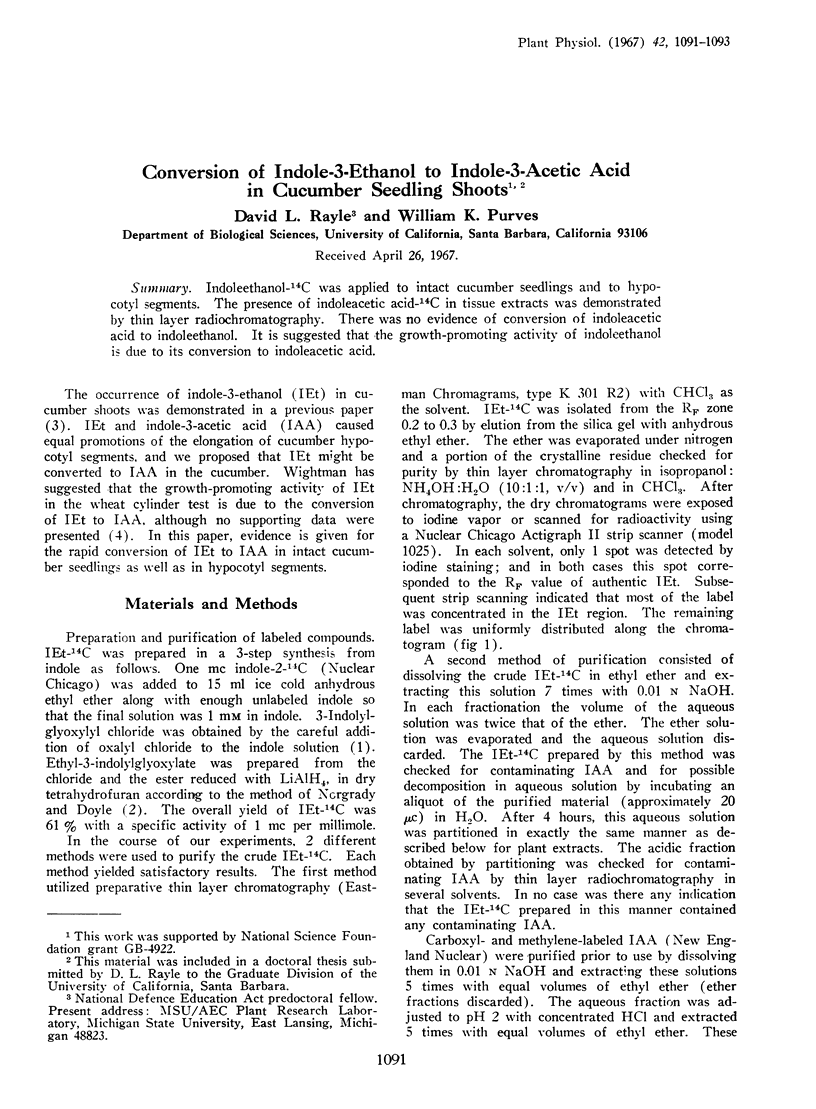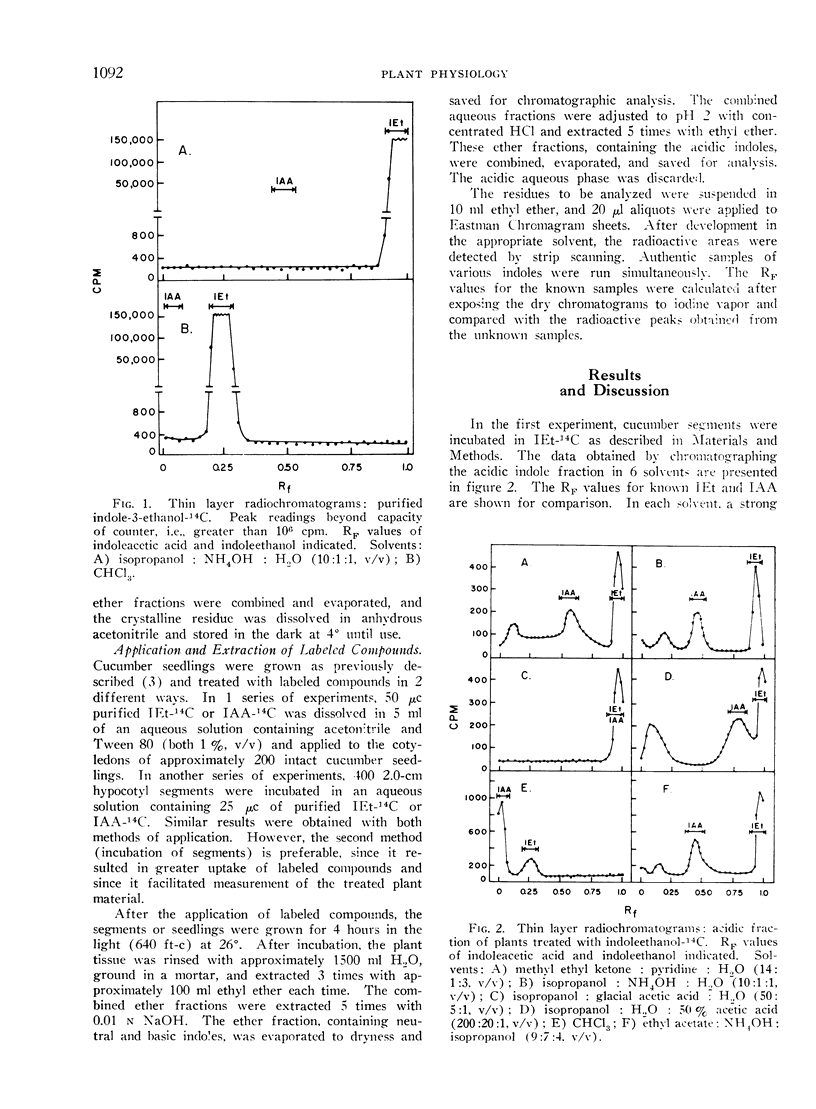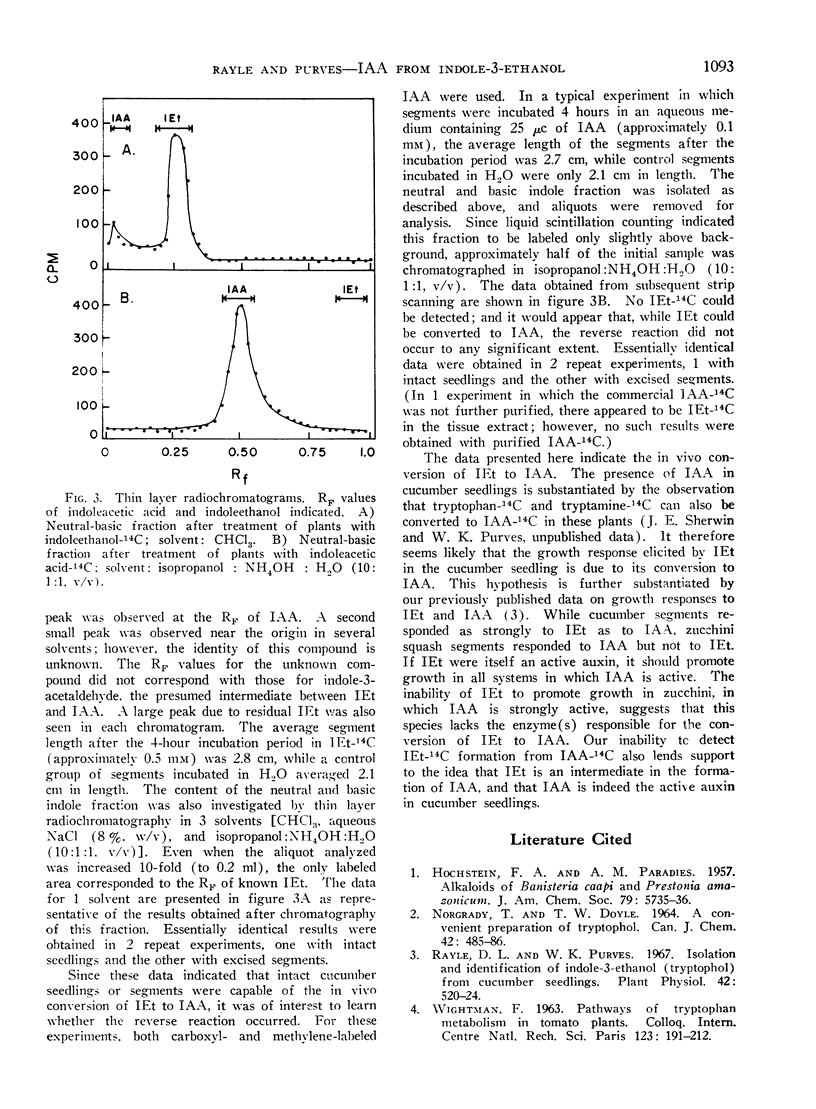Abstract
Indoleethanol-14C was applied to intact cucumber seedlings and to hypocotyl segments. The presence of indoleacetic acid-14C in tissue extracts was demonstrated by thin layer radiochromatography. There was no evidence of conversion of indoleacetic acid to indoleethanol. It is suggested that the growth-promoting activity of indoleethanol is due to its conversion to indoleacetic acid.
Full text
PDF


Selected References
These references are in PubMed. This may not be the complete list of references from this article.
- Rayle D. L., Purves W. K. Isolation and identification of indole-3-ethanol (tryptophol) from cucumber seedlings. Plant Physiol. 1967 Apr;42(4):520–524. doi: 10.1104/pp.42.4.520. [DOI] [PMC free article] [PubMed] [Google Scholar]


